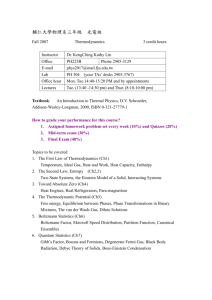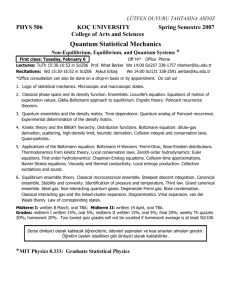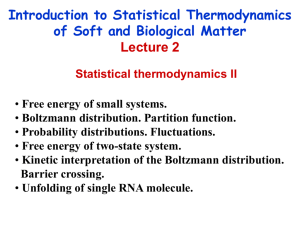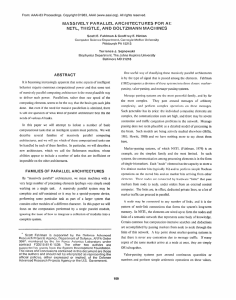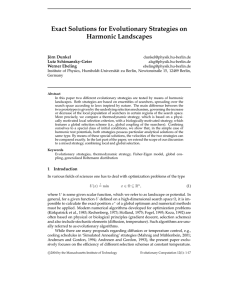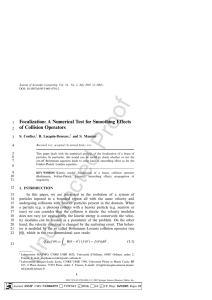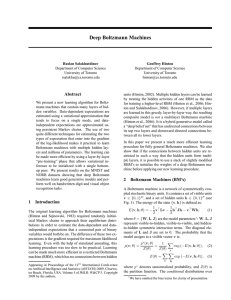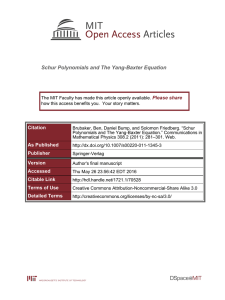"Statistical sampling of RNA structures: Analysis and algorithmic improvements"
advertisement
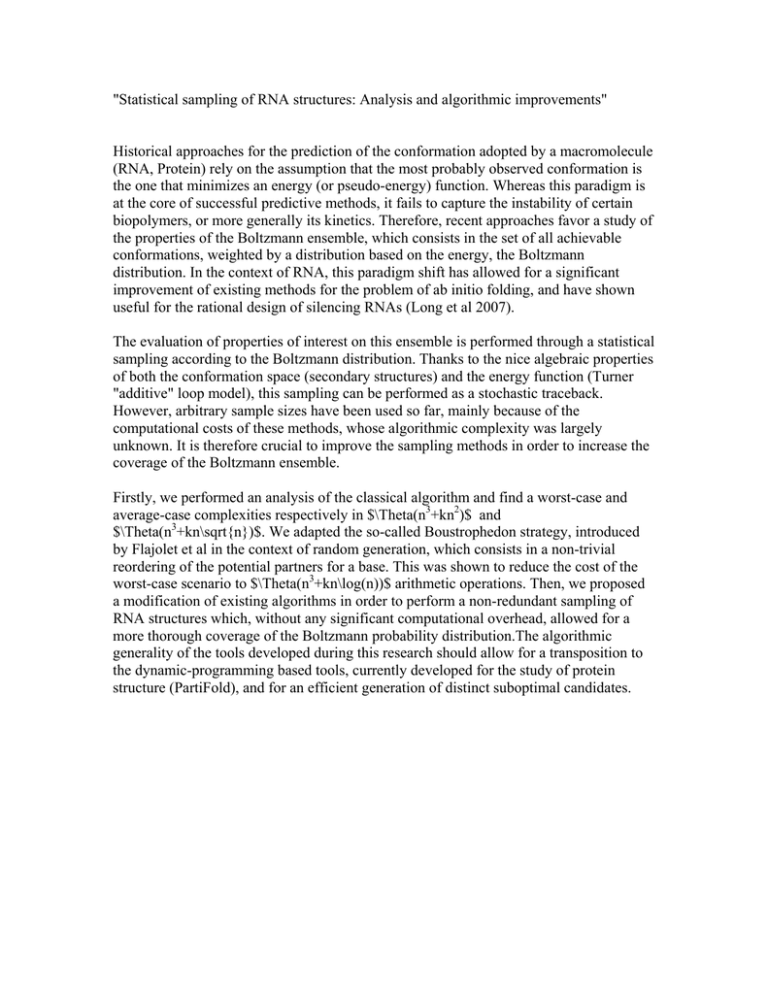
"Statistical sampling of RNA structures: Analysis and algorithmic improvements"
Historical approaches for the prediction of the conformation adopted by a macromolecule
(RNA, Protein) rely on the assumption that the most probably observed conformation is
the one that minimizes an energy (or pseudo-energy) function. Whereas this paradigm is
at the core of successful predictive methods, it fails to capture the instability of certain
biopolymers, or more generally its kinetics. Therefore, recent approaches favor a study of
the properties of the Boltzmann ensemble, which consists in the set of all achievable
conformations, weighted by a distribution based on the energy, the Boltzmann
distribution. In the context of RNA, this paradigm shift has allowed for a significant
improvement of existing methods for the problem of ab initio folding, and have shown
useful for the rational design of silencing RNAs (Long et al 2007).
The evaluation of properties of interest on this ensemble is performed through a statistical
sampling according to the Boltzmann distribution. Thanks to the nice algebraic properties
of both the conformation space (secondary structures) and the energy function (Turner
"additive" loop model), this sampling can be performed as a stochastic traceback.
However, arbitrary sample sizes have been used so far, mainly because of the
computational costs of these methods, whose algorithmic complexity was largely
unknown. It is therefore crucial to improve the sampling methods in order to increase the
coverage of the Boltzmann ensemble.
Firstly, we performed an analysis of the classical algorithm and find a worst-case and
average-case complexities respectively in $\Theta(n3+kn2)$ and
$\Theta(n3+kn\sqrt{n})$. We adapted the so-called Boustrophedon strategy, introduced
by Flajolet et al in the context of random generation, which consists in a non-trivial
reordering of the potential partners for a base. This was shown to reduce the cost of the
worst-case scenario to $\Theta(n3+kn\log(n))$ arithmetic operations. Then, we proposed
a modification of existing algorithms in order to perform a non-redundant sampling of
RNA structures which, without any significant computational overhead, allowed for a
more thorough coverage of the Boltzmann probability distribution.The algorithmic
generality of the tools developed during this research should allow for a transposition to
the dynamic-programming based tools, currently developed for the study of protein
structure (PartiFold), and for an efficient generation of distinct suboptimal candidates.

